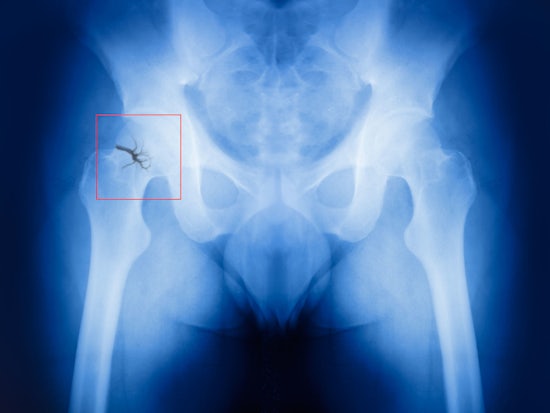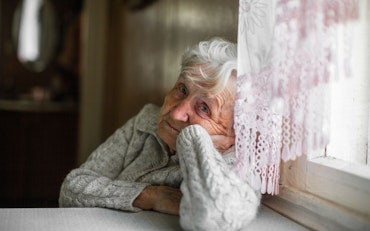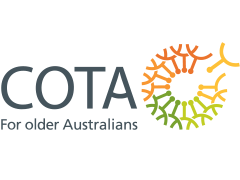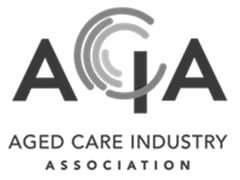Prevention of future falls and fractures a ‘priority’
Authors of a new research report by the Australian and New Zealand Hip Fracture Registry based at Neuroscience Research Australia (NeuRA) are calling for hospitals to make osteoporosis plans a priority for patients leaving hospital after hip fracture.

New research is calling for hospitals to make osteoporosis plans a priority for patients leaving hospital after hip fracture (Source: Shutterstock)
The recommendation from the researchers comes following the data from the 2018 report which shows only 25 percent of hip fracture patients leave hospital on active treatment for osteoporosis and only 24 percent of hospitals provide individualised written information on prevention of future falls and fractures.
Geriatrician and Co-Chair of the Australian and New Zealand Hip Fracture Registry (ANZHFR), Professor Jacqueline Close, comments on the report saying while the data showed a significant improvement of nine percent over last year’s report, Australia is still “significantly behind” other countries in closing the osteoporosis care gap.
“There are huge opportunities to further improve hip fracture care including the prevention of future falls and fractures,” she says.
“Strong evidence exists to support treatment of osteoporosis in this population yet all too frequently we fail to offer treatments which can impact on people’s lives.
“Hospitals need to work toward closing the care gap to ensure hip fracture patients go home with an individualised care plan designed to prevent future fractures.
“General Practitioners and other medical specialists also play a critical role in ensuring that bone health is addressed and that treatments are offered on an ongoing basis for our older Australians unfortunate enough to break a bone from a fall.”
Professor Close also notes that although the incidence of minimal trauma hip fracture has decreased over time, the actual number of hip fractures continues to increase due to the rising number of older adults with current projections suggesting that by 2022 there will be more than 30,000 hip fractures each year with a projected cost of $1.126 billion.
She adds that minimal trauma fractures are relatively common in people aged 50 and over, estimated that, for Australians in this age group, one in four men and two in five women will experience a minimal trauma fracture.
Data from 2015-16 shows that approximately 22,000 people aged 50 and over were hospitalised for this type of hip fracture, with the need for hospitalisation the highest in those aged over 85.
These findings have prompted NeuRA to publish a Hip Fracture Care Guide for patients, their families and carers, which Orthopedic Surgeon and Co-Chair of the ANZHFR Professor Ian Harris says addresses frequently asked questions across the hip fracture journey and highlights the importance of preventing another fracture by treating osteoporosis and preventing falls.
“Our goal is to highlight the current gaps in care and work with hospitals across Australia and New Zealand to increase the uptake of treatments for which we know there is evidence of benefit,” he explains.
“We also need to work in partnership with general practitioners who have a key role in managing chronic disease, of which osteoporosis is one.”
Professor Harris adds that solutions to this issue are yet to be developed but the Registry “is working collaboratively with other national organisations to ensure that osteoporosis is recognised as a treatable chronic disease”.
Commenting further on a key finding of the 2018 report, Professor Harris says hospitals are now sharing their waiting times from arrival to surgery, helping to generate a more transparent snapshot of performance against a national standard.
“Currently the most common delay for people waiting more than 48 hours for surgery is access to operating theatre time,” he explains.
“This is something we must address.”
Another Australian group is also focusing on falls prevention among older people with Western Australia’s Injury Matters launching their new campaign, running from 5 September until 30 November 2018.
The ‘Strengthen Your Legs’ campaign focuses on the fact that strengthening the legs of older people is one of the best ways to prevent falls.
Injury Prevention Manager Rachel Meade says this can even be done with activities people enjoy.
“Each year one in three Australians over 65 have a fall… but [most] falls are preventable,” she says.
She adds that as adults age, they may experience changes in their leg strength which can put them at risk of a fall, including loss of muscle mass and not being able to produce force quickly enough to stop a trip turning into a fall, noting that having strong legs is one way to prevent this.
The full ANZHFR report can be viewed online, with more information on Injury Matters’ ‘Strengthen Your Legs’ campaign available through stayonyourfeet.com.au or 1300 303 540.










